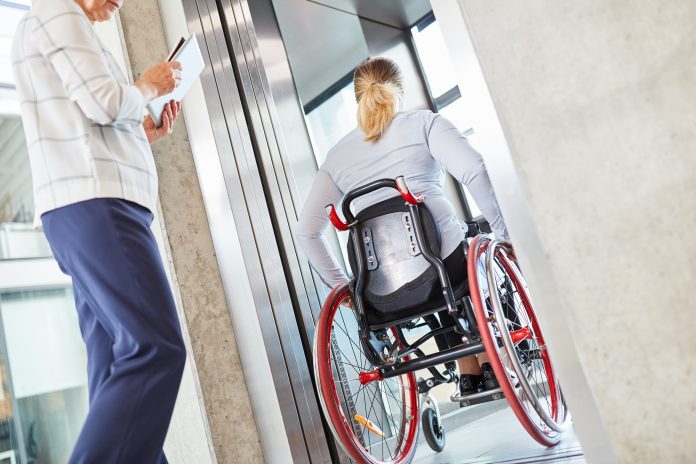From our daily dealings with minimum widths for doorways, maximum gradients for ramps and many other benchmarks, one of the main pieces of advice we would offer is when working to design an inclusive environment don’t be afraid to go beyond the guidance, says About Access
Whether you draw it from Approved Document M of the Building Regulations, from BS 8300 or other official sources, try to remember it is only guidance. It sets a minimum requirement and it gives you the freedom to be better than the lowest level if you can – and if you want to.
Not many people when buying a car would always go for the cheapest option. We all like a few frills on top of the functionality so why not take the same approach to accessibility?
We come across examples far too often of designers adhering to the guidance but not taking the basic additional steps which would have made a big difference.
Inclusive environment in the workplace
Someone who works in an office is likely to leave their desk several times a day for different reasons. If they have an impairment their short and supposedly simple journeys around the building can become quite an ordeal.
Real-life examples of access problems include people having to move to a different part of their workplace to get to food and drink facilities, whether that’s a kitchen, canteen or vending machines.
The kitchen in our example was at the end of a corridor and for some the route meant passing through four sets of doors. Getting there was okay because the people didn’t have their hands full, but coming back was a problem because they would always be carrying at least one item.
In some cases the kitchen might be on a different floor, and we have also seen instances where the loos are on a different floor as well. However accessible the actual facilities are, obstacles can make the route inaccessible.
People might also leave their desk to go out for some fresh air, meetings off-site and various other reasons. You need to think about making it easy for them to leave the building and return. You can’t assume they will spend all day in the building.
They might also need to visit colleagues in other parts of the building, whether in a meeting room or elsewhere, to discuss work projects and events. If they use a meeting room is it accessible? Is the route from their desk to the meeting room accessible?
It’s a case of anticipating the journey around the building from before the employee arrives on site and thinking about the advance information you might provide for them all the way through entering the premises, moving through the building and going about their working day.
Don’t forget about location when considering an inclusive environment
One case we looked at involved a company moving into a new building which was much more accessible. But its location was not on a public transport route and didn’t have any parking. These aspects hadn’t been taken into consideration and that created a significant problem.
In every example the designers and architects had stuck to guidance but failed to use their initiative to do a bit more, such as ensuring such facilities as the kitchen, the loos or a staircase are in a location which is convenient for as many people as possible rather than stuck on the end of a building or in a remote corner.
Doors in an inclusive environment can present a big obstacle
Doors often present a potential obstacle so it’s good to keep them to the minimum and to consider all the design options, because some are more accessible than others.
It’s worth mentioning here that in one hotel we visited we found all the doors to be the appropriate width, with plenty of space either side for them to be opened and closed by a wheelchair user. Except in one case where someone had placed a tall table right outside the door, preventing a wheelchair user from getting close enough to the handle.
Consider the long term view of an inclusive environment
When planning and designing the layout of new buildings and those about to undergo renovation it’s worth taking a long term view and imagining yourself as someone who has an impairment and who will need to use the space and the facilities.
If you’re the boss, or the person who holds the purse strings on an accessibility project, remember that however many disabled colleagues you have in or around your organisation that number could increase because people might acquire impairments through accidents, medical conditions and age.
If that happens should they be forced to leave the job they need and love, or can adjustments be made to keep them and their valuable experience on your team?
What would you do as a boss if you acquired an impairment? Maybe your circumstances and savings would be such that you’d relish the chance to wheel off into the sunset and enjoy retirement? But surely you’d at least want the option to stay rather than be pushed to leave because of accessibility issues?
It’s important to remember that narrow corridors and doorways can present difficult challenges but narrow thinking is easy to address.








![[VIDEO] UK-based firm reveals ‘world’s first’ fully AI-driven architectural project Studio Tim Fu has revealed the 'world's first' fully AI-driven architectural project in Slovenia, developing six luxury villas on the Lake Bled Estate](https://www.pbctoday.co.uk/news/wp-content/uploads/2025/03/Interior-1-studio-tim-fu-218x150.gif)





